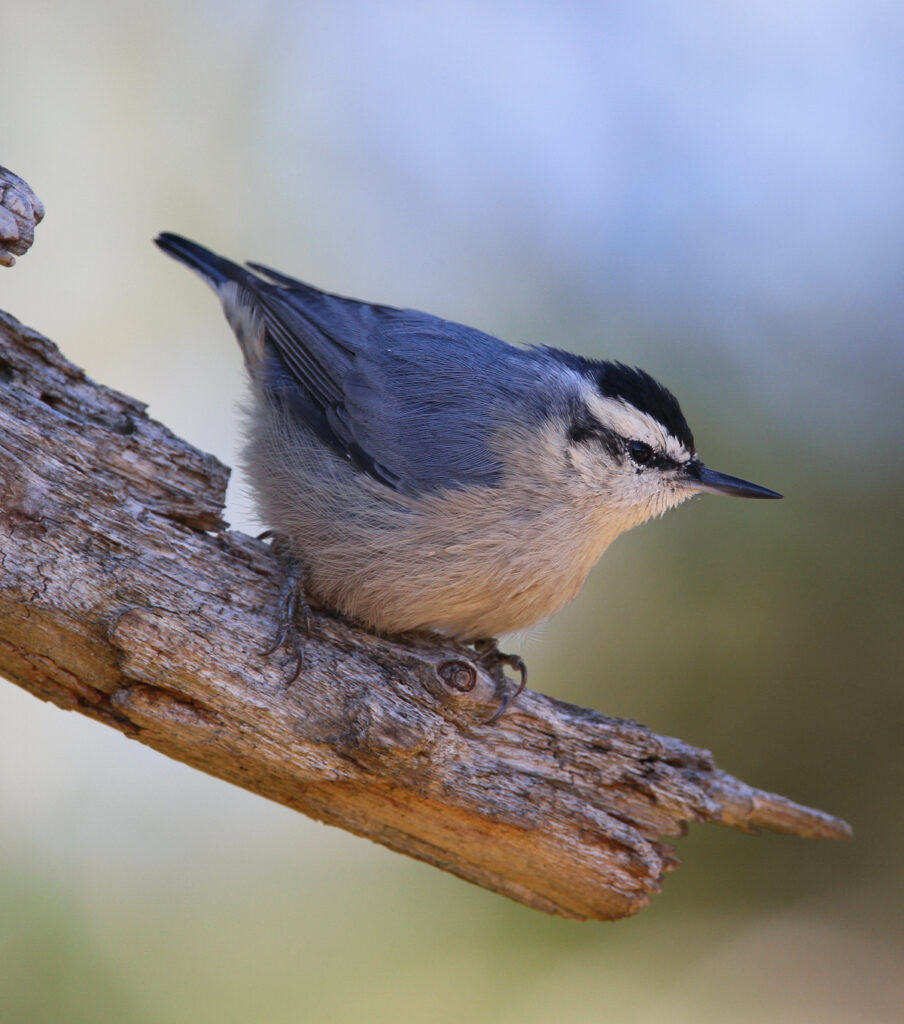Certainly! Here are the answers to the three questions about the Corsican Nuthatch (Sitta whiteheadi):

1. Habitat Question:
Q: In which type of forest does the Corsican Nuthatch primarily live, and why is this habitat important for its survival?
A:
The Corsican Nuthatch lives almost exclusively in mature Corsican pine (Pinus nigra laricio) forests found in the mountainous regions of the island of Corsica. This specific habitat is crucial for the species because it relies on old pine trees for nesting in cavities and feeds primarily on the seeds of these pines. The structure and age of the forest directly influence the availability of food and suitable nesting sites.
2. Conservation Question:
Q: What are the main threats facing the Corsican Nuthatch, and what conservation measures are in place to protect it?
A:
The main threats to the Corsican Nuthatch include habitat loss due to logging, forest fires, and climate change. The species is considered vulnerable due to its restricted range and specialized habitat. Conservation measures include the protection of its habitat through the Parc Naturel Régional de Corse, restrictions on logging, fire prevention efforts, and monitoring populations to inform management strategies.
3. Behavior Question:
Q: How does the Corsican Nuthatch’s feeding behavior and diet differ from other nuthatch species?
A:
The Corsican Nuthatch mainly feeds on the seeds of the Corsican pine, especially during winter. While other nuthatch species have more varied diets, including insects and small invertebrates, the Corsican Nuthatch is more seed-dependent, especially in colder months. It also stores seeds in bark crevices to eat later, a behavior seen in other nuthatches but particularly important for this species due to its limited food sources in winter.
The Corsican Nuthatch (Sitta whiteheadi) is a small passerine bird and the only bird species endemic to the French island of Corsica. Here’s a detailed overview of this unique species:
🐦 Corsican Nuthatch (Sitta whiteheadi)
🔹 Taxonomy & Classification
- Family: Sittidae (Nuthatches)
- Genus: Sitta
- Species: S. whiteheadi
- Named after: British naturalist John Whitehead, who discovered the bird in 1883.
🔹 Physical Description
- Size: About 11.5–12.5 cm (4.5–5 inches) long.
- Plumage:
- Males: Black cap, bluish-grey upperparts, and pale underparts.
- Females: Similar but with a duller cap.
- Juveniles: Less defined plumage compared to adults.
- Bill: Strong and pointed, typical of nuthatches, used to extract insects from bark.
🔹 Habitat & Range
- Location: Exclusively found in Corsica, particularly in mature pine forests.
- Preferred habitat: Old-growth Corsican pine (Pinus nigra laricio) forests, mainly between 800–1,500 meters elevation.
🔹 Behavior & Diet
- Feeding: Insectivorous, but also consumes pine seeds in winter.
- Nesting: Uses cavities in old pine trees; may excavate soft wood or use old woodpecker holes.
- Territorial: Defends nesting territory vigorously.
🔹 Conservation Status
- IUCN Red List: Vulnerable (VU)
- Threats:
- Habitat loss due to logging and forest fires
- Limited range and specialized habitat increase vulnerability
- Conservation efforts: Focus on protecting mature pine forests and restricting logging in key areas.
🔹 Interesting Facts
- It is the only bird species entirely confined to Corsica, making it an important symbol of the island’s biodiversity.
- Its call is a rapid, high-pitched “tuit-tuit,” often repeated in series.